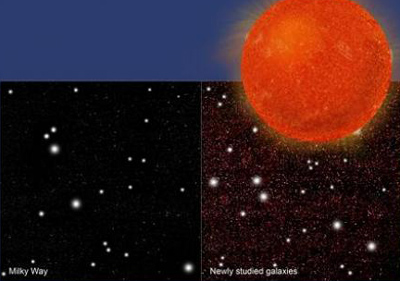
Red dwarf stars are far more common than astronomers have believed — in fact, they may make up 80 percent of the star population, scientists said in a study on Wednesday that triples the number of stars in the universe.
They analyzed the light coming from galaxies known as elliptical galaxies and found they were chock full of these red dwarfs, which are small, cool stars.
“There are possibly trillions of Earths orbiting these stars,” Pieter van Dokkum of Yale University, who led the research, said in a statement. “It’s one reason why people are interested in this type of star.”
The findings, published in the journal Nature, also suggest there is far less dark matter in these galaxies than had been proposed — something that may be good as astronomers understand stars far better than they do dark matter.
“What we already knew was that these galaxies had a lot of unseen matter at their centers,” van Dokkum said in a telephone interview.
“What we didn’t know was whether the matter was dark, this mysterious matters we don’t know much about, or whether it was in the form of stellar bodies.”
The team did spectral analysis, examining the light that comes from the galaxies. Red dwarfs don’t emit enough visible light to be seen from the Earth but they affect the overall glow from a galaxy.
“In these galaxies there are little pieces of the rainbow that are missing, wavelengths that have much less strength than the rest,” van Dokkum said. His team looked for these so-called absorption lines that are known to be made by red dwarf stars.
The data indicated they were abundant.
“We usually assume other galaxies look like our own. But this suggests other conditions are possible in other galaxies,” said Charlie Conroy of the Harvard-Smithsonian Center for Astrophysics, who was also involved in the research.
“So this discovery could have a major impact on our understanding of galaxy formation and evolution.”
Link >>






